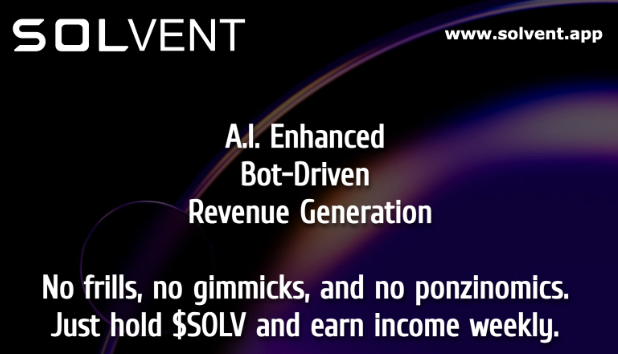
GoldPesa creates a new gold-backed digital token
- Antonio Anderson
- November 15, 2021
- Press Release
- 0 Comments
Over the past decade, the cryptocurrency market has seen massive levels of growth. The tremendous growth in bitcoin’s value, wild speculations and bubbles in various digital tokens, and cryptocurrency exchange hacks have received a lot of media attention. Initial coin offerings, non-fungible tokens, and other crypto-related terms have become familiar even to those with no interest in finance. Due to its growing significance, the cryptocurrency market and proliferation of digital tokens have given birth to the idea of tokenomics.
Tokenomics is defined as the study of the economics of token markets. It’s a study of how digital token prices are determined, why people choose to own different types of tokens, and how digital tokens are created, distributed, and governed. The desire to create a decentralized currency drove the creation of Bitcoin, the first cryptocurrency. The goal was to create a secure peer-to-peer network that allowed for “money” transfers without middlemen like banks. As a result, blockchain technology was developed.
Additionally, the interest in digital tokens has been fueled by both decentralization and tokenization. The ability to securely prove ownership and transfer “money” (fungible tokens) and “unique assets” (non-fungible tokens) without the use of intermediaries is exceptionally appealing. As a result, the rise of digital tokens is unsurprising. However, one crucial question remains: What factors go into determining the price of a digital token? Why, for example, was Bitcoin only worth a few dollars in 2011, yet it was worth over $60,000 in 2021? Tokenomics is the field that answers that question.
The forces of supply and demand can determine asset prices in markets according to a fundamental economic principle. In particular, at the point where demand equals supply, an equilibrium price emerges. Otherwise, the asset has either too much demand or too little supply. This principle also holds true in the context of tokenomics. There is a demand for fungible tokens to trade digital currencies and non-fungible tokens to prove ownership of unique assets.
An initial coin offering (ICO) is a popular method of launching a digital currency, in which the issuer sells tokens (or coins) to the general public. This is similar to an initial public offering (IPO), in which a private company sells its stock to the general public for the first time. Before the ICO, investors can pre-mine tokens. The goal of pre-mining is to reward key stakeholders such as the project’s founders and early investors. In principle, this is similar to awarding shares to entrepreneurs and venture capitalists before an IPO. ICO investors should consider the extent of pre-mining. A large sale of pre-mined tokens following the ICO would cause a supply shock, lowering the price. However, the opposite is true when it comes to a fair launch, and Bitcoin is an excellent example of that where there is no pre-mining before tokens are sold to the general public.
While tokenomics is considered a relatively new branch of economics, investors are now seeing a connection between an old and faithful asset class and the new technologically-driven cryptocurrency. That old and faithful asset class is gold. Gold is one of the most popular alternative assets in the investment world. In fact, gold has been a popular choice for wealth protection since the dawn of civilization. Often dubbed “The New Gold,” cryptocurrencies and digital tokens have split current investor opinions about alternative investment spaces.
Cryptocurrency is the new investment asset that threatens gold’s dominance. After all, despite being less than 20 years old, Bitcoin, Ethereum, Binance Coin, and other popular digital tokens have been drawing the attention of people who are interested in investing. It seems that younger, more digitally inclined investors look to cryptocurrencies as a store of value, to the point where they are labeling their digital gold.
When it comes to investing, you can never go wrong if you decide to invest in either option. Even so, you need to consider the key differences between gold and crypto.
First off, the availability of each asset class is different. Before adding something to their investment portfolio, seasoned investors always consider availability. They believe that the best investment assets are those that require little to no effort to acquire. In terms of ease of purchase, gold can be purchased in a variety of locations. For example, if a person wants to buy gold in various quantities, they can go to a gold and jewelry store. Gold retail websites that sell gold bars and bullion can also be used for online transactions. If holding physical gold is too much for you, you can use gold exchange-traded funds (ETFs), mutual funds, and individual retirement accounts instead. Many businesses also use these asalternatives to bullion and other forms of physical gold that are readily available.
On the other hand, cryptocurrency investing is more complicated than other forms of investment. This is because it is purely a digital asset based on a network distributed across many computers. When looking at crypto exchanges around the world, you will notice that cryptocurrency investing requires the creation of a digital wallet and reliable internet access. A rigorous verification procedure is also in place to prevent illegal activities such as money laundering. The good news is that the market now has a plethora of cryptocurrency exchange platforms, making crypto more accessible to potential investors.
The second difference between gold and cryptocurrency is volatility. The volatility of cryptocurrency is legendary. In contrast to gold has a reputation as a stable investment asset. Its value can fluctuate by as much as 30% in a matter of hours. You will be hard-pressed to find that kind of volatility in other investment assets. For example, Bitcoin’s 30 percent drop on May 19 this year was quickly recovered and was down to just over 12 percent by the end of the day. Investors regard gold as a haven because it has a significantly smoother ride than other assets in the market.
Liquidity is another significant difference between gold and cryptocurrency. If an asset is highly liquid, an experienced investor knows it will be a good investment. Liquidity is the measure of how easy it is to convert a specific asset into cash at a price that reflects its current market value. Gold has historically been considered a liquid asset. Investors can sell it for their preferred fiat currency. There are numerous ways to obtain liquidity from precious metals such as gold, including physically taking it to a bullion dealer or selling it online through an auction house. There’s also no need to be concerned if you plan to sell your precious metals abroad because gold is widely accepted all over the world. Cryptocurrencies are also quite liquid, mainly due to their digital nature. In response to the significant increase in the number of people interested in cryptocurrency, crypto exchange platforms now operate 24 hours a day, 365 days a year. Investors can access their digital wallets anytime and from any location as long as they have an internet connection. Furthermore, crypto exchange transactions are quick and straightforward.
Last but not least is the differences in the supply of both gold and cryptocurrency. Gold and cryptocurrency both have a limited supply. Aside from the fact that gold mining and refining are both complex and time-consuming processes, the amount of gold found in the earth’s crust is unknown. As a result, it’s safe to assume that the amount of gold available is limited. For crypto, the supply limit is usually set. Only 21 million Bitcoins, for example, can ever be mined in total, with over 17 million already mined.
In order to combine the benefits of cryptocurrency and gold, GoldPesa has developed a digital token that turns gold into a revenue-generating asset. GoldPesa is on a mission to create a gold-backed token that trades at a premium and has the potential to create wealth, similar to the way Bitcoin does. Since it combines physical gold, quantitative science, and blockchain technology, GPX has the characteristics of a tokenized gold-backed structured product. Each GPX token is backed by one gram of pure, which is kept in a secure vault. Moreover, the tokenomics that form the foundation of this token are genuinely unique. The price of a newly minted GPX token purchased from GoldPesa is the spot gold price plus 1%. The PAWN, a GoldPesa-developed proprietary intelligent trading strategy, receives half of the 1% fee. The PAWN profits are used to purchase and burn the GPX token on the open market. As a result, GoldPesa generates demand while reducing supply, raising the price of GPX for token holders.
For more information on GoldPesa, please click here.





